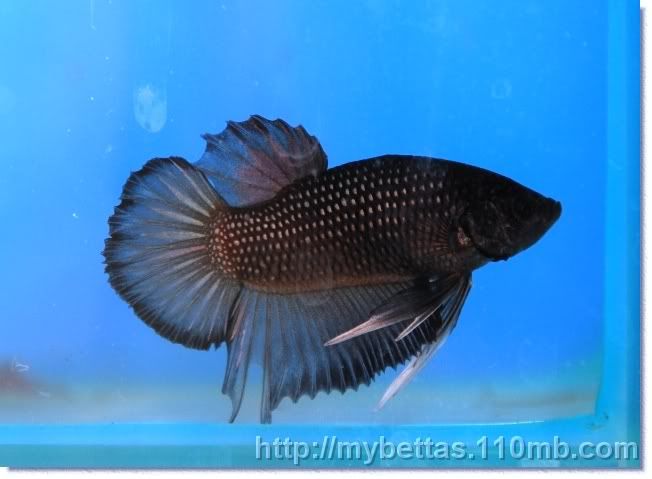It's been awhile since we're posting, so let's start this with this question below.
> how can i develop some of my betta into any type of fin and colour that we
> desired for?
> for example i have a solid blue OHM males with female plakat with brown body
> and red fin..what will be the fry after i have spawn them?
Before we start the discussion, let's assume that the bettas in your hand support your goals (e.g. there is a chance for the line to achieve the goals). We're not talking about "how to produce super red fish if I only have melano pair" for instance. Despite this is still possible, it will take a much longer route to achieve (read more for background reasoning on this).
Those are 2 *different* types of development and typically very difficult if you want to focus on them on the same time. It is much easier to focus on 1 type first (e.g. the fin) and then continue the development to the 2nd type (e.g. the colour).
So, for instance, it is easier to focus your development to get the "perfect" fin that you are aiming for in, say, 4 generations. If your goal is to get straight nice fin of OHM in 80% of the spawn (e.g. 80% of fry will be OHM with nice fin), then you must develop this line by crossing OHM males with HM or OHM females. Most of the time, crossing it with plakad is
not going to get the fin that you want! During this phase, you may need to buy suitable females from other breeders. Be patient, you don't want to waste your "line" by crossing the male with
just any female. Each of your male (or female) is so valuable that you must make sure that when they spawn, they
will bring you closer to your aim!
Now, say, you've achieved your first goal. It is time to improve the colour of your line by searching for
other females that can deliver the colour that you want. You may get the females from one of your spawn, but chances are, you will need to buy suitable females. Note that when you introduce a new female, you never know what the genes this female has, so, on your next spawn, usually you will degrade your first goal (e.g. if you had consistently got 80% OHM in your spawn previously, when you cross any of your males with this new female, the outcome may result you to get only 30% OHM in your brood). This kind of "2 steps forward and 1 step backward" is very common when you introduce new genes. However, this time it is easier for you go to get back to your first goal (of getting 80% OHM in the spawn) - you only need to cross the F1 females of this new line with their "uncle". Remember, the "uncle" has the desired goal (80% OHM goal), hence crossing with them will guarantee that you maintain your first goal while pursuing the 2nd goal. You need to know the timing for
when to cross out your bettas.
Short answer for your question. If you cross your OHM male x plakad brown/red female, you will get.....super deltas. if your female is HMPK, then you may get HM fry and of course HMPK (I'm assuming your OHM male also carry HMPK gene; most HM has been crossed to HMPK during its development). Colour-wise, you will get multi-colour. Usually in the form of blue with red-wash (e.g. blue red) and green red. Depending on the genes of the males and females, you may get mustard gas variation too. If any of the fish has marble gene (may not show on the current fish, but they can carry the gene), then you will get marbles thrown as well. Multi-colour is the best starting point for colour-related goal, since you will get a lot more chances of mix-and-match to see if your fry will end up with the good colouration that you're looking for. Consider yourself an artist, use your brush and start painting. You will need a lot of practice and experimentation and it may takes a long time to get the most gorgeous painting in your life, but you'll enjoy the process
and the outcome :)
BTW, this has been discussed as well on "
tips on achieving your betta goal". If you are focusing on giants, the discussion on
distribution of giant genes may help you figure out whatever happened to your spawn :)
Comments welcome folks.




